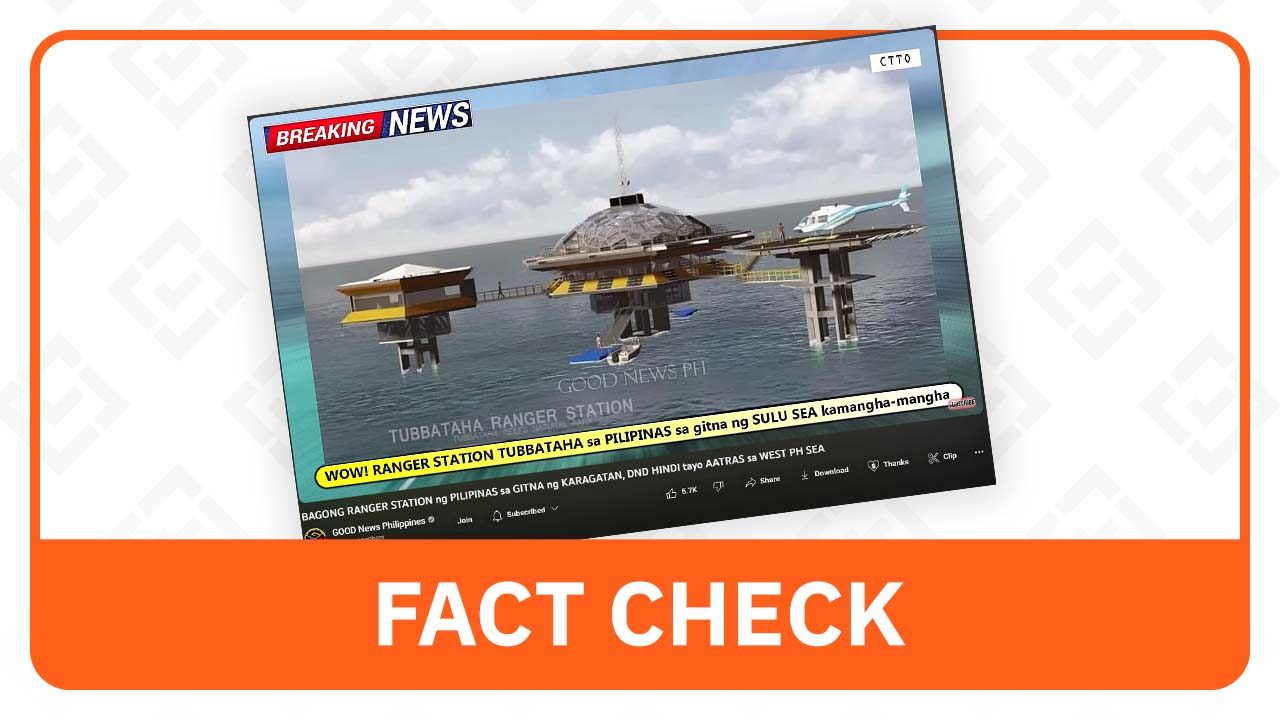SUMMARY
This is AI generated summarization, which may have errors. For context, always refer to the full article.

Claim: The US government fully funded the construction of the Tubbataha Reef ranger station, with funds coming from its compensation payment when the USS Guardian ran aground the protected area in 2013.
Rating: MISLEADING
Why we fact-checked this: The claim was made in a YouTube video posted on September 24, which has 212,867 views, 5,700 likes, and 1,012 comments as of writing. It was uploaded by a channel with 401,000 subscribers.
In the video, a narrator says the project uses funds from payments made by the US over the 2013 grounding incident.
The bottom line: The construction of the new Tubbataha Reef ranger station uses compensation money from the US, but only partly. The project is also funded by the Philippine government and private organizations, not the US alone.

Multi-sectoral effort: Phase I of the construction has already been completed with funding from government agencies and private organizations, including a P40-million grant from the Department of Environment and Natural Resources and P40 million from the Tourism Infrastructure and Enterprise Zone Authority.
Phase II of the project will use P58.2 million from the P87.03 million paid by the US government for the damage caused by the USS Guardian on the reef in 2013. The Avenger-class minesweeper vessel damaged about 2,345.67 square meters of coral reef in the marine park.
Long time coming: The new station will include living quarters for the rangers, a research facility, and a helipad. Plans for the project began in 2013, while construction started in 2020. However, progress has slowed down due to funding issues. According to the Tubbataha Management Office, around P122 million is still needed to complete the project.
Protected area: The Tubbataha Reefs Natural Park is a 97,030-hectare marine protected area located 150 kilometers southeast of Puerto Princesa City, Palawan. The UNESCO World Heritage site is considered an “important habitat for internationally threatened and endangered marine species.”
The misleading YouTube video was uploaded amid recent news of China’s environmental damage in the West Philippine Sea, with Senator Risa Hontiveros calling on Beijing to pay damages for its alleged harvesting and destruction of corals. (READ: Philippines: Crushed corals, discolored seabed where Chinese militia go)
As Manila mulls bringing Beijing to court, China slammed the accusations and said the Philippines was “creating a political drama from fiction.”
Rappler has published fact-checks related to the maritime dispute between the Philippines and China:
- FACT CHECK: No orders from Marcos to surround Chinese ships at Recto Bank
- FACT CHECK: Cory Aquino administration aware of UNCLOS in 1988
- FACT CHECK: Filipinos opposed China’s reclamation even before Hague ruling
– Kyle Marcelino/Rappler.com
Kyle Marcelino is a graduate of Rappler’s fact-checking mentorship program. This fact check was reviewed by a member of Rappler’s research team and a senior editor. Learn more about Rappler’s fact-checking mentorship program here.
Keep us aware of suspicious Facebook pages, groups, accounts, websites, articles, or photos in your network by contacting us at factcheck@rappler.com. Let us battle disinformation one Fact Check at a time.
Add a comment
How does this make you feel?
There are no comments yet. Add your comment to start the conversation.